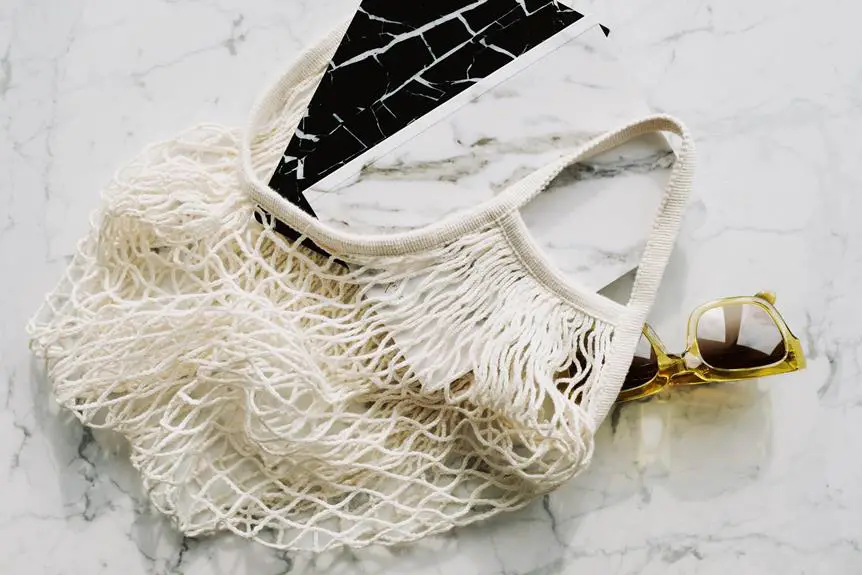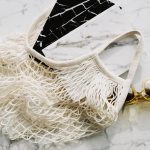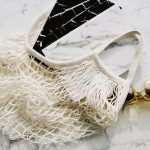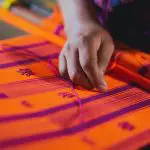Wondering what fabric is best for screen printing? Choosing the right fabric is crucial for achieving top-notch results. With various options available, it's essential to understand the characteristics of different fabrics and how they interact with the screen printing process.
By mastering the intricacies of fabric selection, you can ensure that your designs come out crisp, vibrant, and long-lasting. Whether it's cotton, polyester, blend fabrics, performance fabrics, synthetic fabrics, natural fabrics, or specialty fabrics, each type offers unique advantages and considerations.
Understanding the best fabric for your specific printing needs is key to elevating the quality of your prints.
Key Takeaways
- Cotton is a versatile and durable fabric that holds color well and absorbs ink easily.
- Polyester is a smooth and durable fabric that holds color vibrancy and is less prone to shrinking and wrinkling.
- Blend fabrics offer a combination of durability and print quality, and are resistant to shrinking and wrinkles.
- Performance fabrics are breathable and moisture-wicking, enhancing overall performance, and are also durable and stretchable.
Cotton
When screen printing, cotton is the fabric to print on and to print with. Cotton screen printing is favored for its ability to hold color well, resulting in vibrant and long-lasting prints. The natural fibers of cotton readily absorb ink, allowing for sharp and defined designs. Additionally, cotton fabric selection is ideal for its durability and versatility. It can withstand the multiple washings that printed garments often undergo without compromising the print quality, making it a reliable choice for various applications.
Cotton's absorbent nature also means that it takes well to different types of inks, including water-based and plastisol inks, providing flexibility in the printing process. This makes cotton a preferred material for screen printing, especially for those seeking to achieve intricate and detailed designs.
Furthermore, the soft and breathable qualities of cotton make it comfortable to wear, appealing to both the wearer and the printer. Its widespread availability and cost-effectiveness further contribute to its popularity in the screen printing industry.
Polyester
If you want vibrant, long-lasting prints, polyester is the fabric to print on and print with when screen printing. Polyester fabric is known for its ability to hold color vibrancy exceptionally well, making it an ideal choice for designs that require intense and vivid colors. When it comes to screen printing, polyester has several advantages over other fabrics, especially in terms of ink adhesion. The smooth surface of polyester allows the ink to adhere firmly, resulting in sharp and precise designs. Additionally, polyester is a synthetic fabric, which means it is less prone to shrinking and wrinkling compared to natural fibers like cotton. This makes it a reliable choice for creating durable and professional-looking prints.
| Advantages of Polyester for Screen Printing | |
|---|---|
| Excellent ink adhesion | Polyester fabric allows ink to adhere firmly, resulting in sharp and precise designs. |
| Color vibrancy | Polyester holds color vibrancy exceptionally well, making it ideal for designs that require intense and vivid colors. |
| Durability | Polyester is less prone to shrinking and wrinkling compared to natural fibers, making it a reliable choice for durable prints. |
Blend Fabrics
When considering fabric options for screen printing, you may want to explore the advantages of cotton-polyester blend fabrics. These blends offer a combination of durability and print quality that can be beneficial for various printing projects.
Understanding the specific qualities of blend fabrics can help you make informed decisions for your screen printing needs.
Cotton-Polyester Blend Advantages
For screen printing, the best fabric choice is often a cotton-polyester blend due to its versatility and durability. This blend offers several advantages for screen printing techniques:
- Durability: The combination of cotton and polyester creates a fabric that's resistant to shrinking, stretching, and wrinkles, making it ideal for long-lasting prints.
- Color Retention: Cotton-polyester blends hold color well, ensuring that the printed designs maintain their vibrancy over time.
- Moisture Wicking: The polyester component in the blend helps with moisture-wicking, making it suitable for activewear and sportswear applications.
Durability and Print Quality
To achieve optimal durability and print quality when using blend fabrics for screen printing, prioritize selecting a fabric with a balanced cotton-polyester composition. A fabric with a higher percentage of cotton provides better print resolution, while polyester enhances durability. During durability testing, this blend showed improved resistance to stretching and tearing compared to 100% cotton fabrics. Additionally, the polyester component helps the fabric maintain color vibrancy after multiple washes, ensuring the longevity of the printed design. When considering print resolution, the cotton content allows for sharp and intricate designs to be accurately reproduced on the fabric. Overall, a balanced cotton-polyester blend offers the best of both worlds, making it an excellent choice for achieving lasting durability and high-quality print results.
| Durability Testing | Print Resolution | Color Retention |
|---|---|---|
| Improved resistance to stretching and tearing | Allows for sharp and intricate designs | Maintains color vibrancy after multiple washes |
Performance Fabrics
When it comes to screen printing on performance fabrics, you'll want to consider factors such as breathability and moisture-wicking, durability and stretchability, as well as ink adhesion and vibrancy.
These fabrics are designed to keep you comfortable during physical activity, so it's important to choose a fabric that can handle the demands of both printing and wearing.
Understanding how these performance fabrics interact with the screen printing process will help you achieve the best results for your designs.
Breathability and Moisture-Wicking
When selecting fabrics for screen printing, you'll want to look for materials that are both breathable and moisture-wicking. Performance fabrics are designed to provide the utmost comfort and functionality, making them ideal for various printing applications.
Here's why breathability and moisture-wicking are crucial for performance fabrics:
- Enhanced Comfort: Performance fabrics offer excellent breathability, allowing air to circulate through the fabric, keeping you cool and comfortable even in high-intensity activities.
- Moisture-Wicking Properties: These fabrics efficiently wick away moisture from the skin, keeping you dry and preventing the discomfort caused by sweat during physical exertion.
- Improved Performance: With their ability to keep you dry and comfortable, performance fabrics enhance your overall performance, making them a preferred choice for screen printing on activewear and athletic garments.
Durability and Stretchability
For performance fabrics, durability and stretchability are crucial factors to consider when selecting the best fabric for screen printing.
Durability ensures that the fabric can withstand the rigors of the printing process, including ink application and curing, without compromising its integrity. Look for fabrics with excellent color retention to ensure that the printed design maintains its vibrancy and clarity over time.
Additionally, stretchability is important as it allows the fabric to be pulled taut during the printing process, ensuring that the design is applied smoothly and without distortion. When evaluating fabric composition, prioritize materials with strong synthetic components like polyester or elastane, as these tend to offer superior durability and stretch.
Ink Adhesion and Vibrancy
Ensuring proper ink adhesion and vibrant coloration on performance fabrics is achieved by selecting materials with exceptional color retention and incorporating strong synthetic components like polyester or elastane for superior durability and stretch. When considering ink adhesion and color vibrancy on performance fabrics, it's crucial to focus on the following:
- Color Retention: Opt for fabrics with exceptional color retention properties to ensure that the ink maintains its vibrancy over time, even after multiple washes.
- Polyester Content: Choose fabrics with a high polyester content as it provides excellent ink adhesion and color vibrancy due to its ability to hold onto dyes and pigments.
- Elastane (Spandex) Blend: Incorporate fabrics with elastane (spandex) for superior ink durability and stretch, which is essential for performance wear that requires both vibrant colors and flexibility.
Synthetic Fabrics
Looking for a durable and versatile fabric for screen printing? Consider using synthetic fabrics for their excellent color retention and wrinkle resistance. Synthetic fabrics are made from various artificial fibers and are known for their durability and ability to hold vibrant colors. They are also less prone to shrinking compared to natural fabrics, making them an ideal choice for screen printing.
When it comes to synthetic fabrics, there are several types that are commonly used for screen printing. Some of the most popular synthetic fabric types include polyester, nylon, and spandex. Each of these fabrics offers unique characteristics that make them suitable for different printing needs.
| Fabric Type | Characteristics | Best for |
|---|---|---|
| Polyester | Excellent wrinkle resistance | Sportswear and activewear |
| Nylon | Strong and abrasion-resistant | Outdoor gear and bags |
| Spandex | Stretchy and form-fitting | Athletic wear and swimwear |
In terms of print techniques, synthetic fabrics work well with various methods including plastisol, water-based, and discharge printing. These fabrics provide a smooth and consistent surface for printing, resulting in high-quality, long-lasting designs.
Natural Fabrics
When considering natural fabrics for screen printing, you may find that they offer a distinct texture and breathability compared to synthetic fabrics. Natural fabrics are a popular choice for silk screening due to their ability to absorb ink and create vibrant, long-lasting designs. When it comes to fabric selection for screen printing, natural fabrics such as cotton, linen, and hemp are often preferred for their unique qualities.
Here are some key points to consider when working with natural fabrics for screen printing:
- Cotton: Cotton is a versatile and widely used fabric for screen printing due to its softness, breathability, and ability to hold color well. It provides a smooth surface for printing, resulting in crisp and clear designs.
- Linen: Linen fabric offers excellent absorbency, making it a suitable choice for screen printing. Its slightly textured surface adds a distinctive look and feel to printed designs, making it a popular option for artists and designers.
- Hemp: Hemp fabric is known for its durability and environmental sustainability. It's a strong and resilient fabric that holds up well to the screen printing process, producing high-quality and long-lasting prints.
When choosing natural fabrics for screen printing, consider the specific qualities and characteristics of each fabric to achieve the desired results in your designs.
Specialty Fabrics
If you're seeking a fabric that offers unique characteristics for screen printing, consider exploring specialty fabrics. Specialty fabrics are specifically designed to cater to the demands of custom designs and the artistic process of screen printing. These fabrics are often engineered to provide features such as enhanced color vibrancy, texture retention, and durability, making them ideal for intricate and vibrant designs.
When it comes to custom designs, specialty fabrics offer a wide range of options to bring your artistic vision to life. Whether you're looking for fabrics with specific textures, sheens, or finishes, specialty fabrics provide a diverse selection to suit your creative needs. Additionally, these fabrics can enhance the visual impact of your designs, making them stand out with exceptional clarity and depth.
In the artistic process of screen printing, specialty fabrics play a crucial role in achieving the desired outcome. Their unique properties allow for precise ink application and adherence, resulting in sharp and vivid prints. Furthermore, the durability of specialty fabrics ensures that the printed designs maintain their integrity, even after multiple washes and extended use.
Considerations for Different Garments
Consider the fabric weight when choosing garments for screen printing to ensure optimal print quality and durability. The fabric weight plays a crucial role in determining the success of the printing technique and the overall look and feel of the printed design.
Here are the key considerations for different garments:
- Fabric Weight and Printing Technique: Lighter fabrics, such as those with a weight of 4-5 ounces, are suitable for detailed designs and softer prints. Medium-weight fabrics (5-6 ounces) work well with most screen printing techniques. Heavyweight fabrics (6 ounces and above) are ideal for bold and vibrant designs, especially when using specialty inks or overlays.
- Color Vibrancy and Fabric Texture: Consider the color vibrancy you want to achieve and the texture of the fabric. Lighter colored fabrics and those with a smooth texture tend to showcase colors more vibrantly. Conversely, darker colored or textured fabrics may require additional layers of ink to achieve the same vibrancy.
- Durability and Longevity: The durability of the garment is influenced by the fabric weight and printing technique. Heavier fabrics and proper printing techniques ensure longevity and resistance to wear and tear, making them suitable for items like workwear or sportswear.
Selecting the right garment based on fabric weight, color vibrancy, and fabric texture will contribute to the overall success of your screen printing project.
Frequently Asked Questions
Can Screen Printing Be Done on Leather or Suede Fabrics?
Yes, leather screen printing can be done, but suede fabric printing may be more challenging due to its texture. Make sure to use the appropriate ink and techniques for each fabric to achieve the best results.
Are There Any Fabric Types That Are Not Suitable for Screen Printing?
Some fabric types may not be suitable for screen printing due to their lack of preparation for ink compatibility. Consider durability and washability when choosing fabric, as these factors impact the quality of the print.
What Are the Best Fabrics for Screen Printing on Athletic Wear?
For athletic wear, the best fabrics for screen printing are those with moisture-wicking performance and breathable comfort. Look for materials like polyester and blends, which offer durability and allow the ink to adhere well.
Are There Any Specific Considerations for Screen Printing on Stretchy Fabrics?
When screen printing on stretchy fabrics, consider ink adhesion and elasticity. Proper fabric preparation ensures print durability. Use stretch-friendly inks and test for elasticity. This process promotes successful screen printing on stretchy materials.
Can Screen Printing Be Done on Delicate Fabrics Like Silk or Chiffon?
Yes, silk screen printing can be done on delicate fabrics like silk or chiffon using specific printing techniques. It requires careful handling and expertise to ensure the fabric is not damaged during the printing process.
- Fabrics and Their Role in Wellness and Comfort - July 22, 2024
- Choosing Safe Fabrics for Baby Clothes - July 22, 2024
- Impact of Fabrics on Skin Health - July 22, 2024







